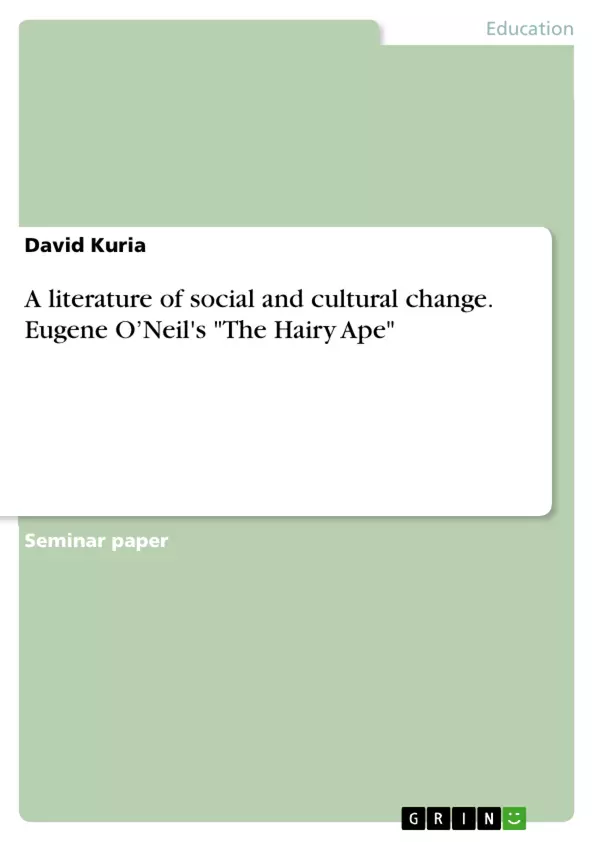The following work gives an overview of content and an interpretation of Eugene O’Neils expressionist play "The Hairy Ape".
Table of Contents
- Yank, Paddy, and Long
- Yank's Inclination Towards Belonging
- The Three Poems
- F. Scott Fitzgerald
- America: A Cultural Hell
- America: A Poem of Hope
- Outcast: A Poem of Loss
Objectives and Key Themes
This text explores various aspects of American society during the early 20th century, focusing on social and cultural changes, particularly within the context of industrialization, racial tensions, and the aftermath of World War I. The text uses literary works, including poems, plays, and short stories, to delve into the complexities of these transformations.- Social Class and Identity
- The Role of Industrialization
- Race and Discrimination
- The American Dream and its Disillusionment
- The Cultural Landscape of the Jazz Age
Chapter Summaries
- Yank, Paddy, and Long: This chapter introduces three characters: Yank, Paddy, and Long, each representing a different social perspective. Yank, a fireman on a ship, embraces his working-class identity, seeking belonging within his social hierarchy. Paddy, the oldest of the group, reflects on the changing nature of work and societal expectations due to industrialization. Long, a labor radical, criticizes the exploitative nature of capitalism and the ship's environment.
- Yank's Inclination Towards Belonging: This chapter examines Yank's desire for belonging and how it is challenged by his encounter with Mildred Douglas. While initially content with his position, Mildred's reaction to him questions his worth and place in society, highlighting the societal biases present.
- The Three Poems: This chapter explores three poems that reflect upon the social, spiritual, and moral decline of America during this period. The poems, particularly "Harlem Shadows," depict the effects of poverty, racial injustice, and moral degradation, highlighting the challenges faced by African Americans.
- F. Scott Fitzgerald: This chapter focuses on F. Scott Fitzgerald's life and his depiction of the Jazz Age. The text highlights the extravagance, social irresponsibility, and spiritual desperation that characterized this period. Fitzgerald's inability to connect with the post-Depression generation ultimately led to his decline, showcasing the changing cultural landscape.
- America: A Cultural Hell: This chapter examines Claude McKay's poem "America," which reflects on the complexities of American identity and the challenges of living in a country that is both a "hell" and a source of inspiration. The chapter draws parallels between McKay's views and the experiences of F. Scott Fitzgerald, emphasizing the contrast between hope and disillusionment.
- America: A Poem of Hope: This chapter discusses McKay's perspective on America in his poem "America." Despite recognizing the hardships and injustices faced by many, he expresses a love for America and believes in its potential for unity and strength.
- Outcast: A Poem of Loss: This chapter analyzes McKay's poem "Outcast," which explores the theme of identity loss and the impact of slavery on African Americans. The poem highlights the challenges of finding one's roots and the struggle to overcome historical injustices.
Keywords
This text examines key themes and concepts surrounding American society during the early 20th century, including social class, industrialization, race, the American Dream, and the Jazz Age. The analysis of poems, plays, and short stories provides insights into the complexities of these issues, revealing the tensions between social mobility, identity formation, and the pursuit of individual aspirations in a rapidly changing world.
Excerpt out of 8 pages
- scroll top
- Quote paper
- David Kuria (Author), 2013, A literature of social and cultural change. Eugene O’Neil's "The Hairy Ape", Munich, GRIN Verlag, https://www.grin.com/document/280709
Look inside the ebook



